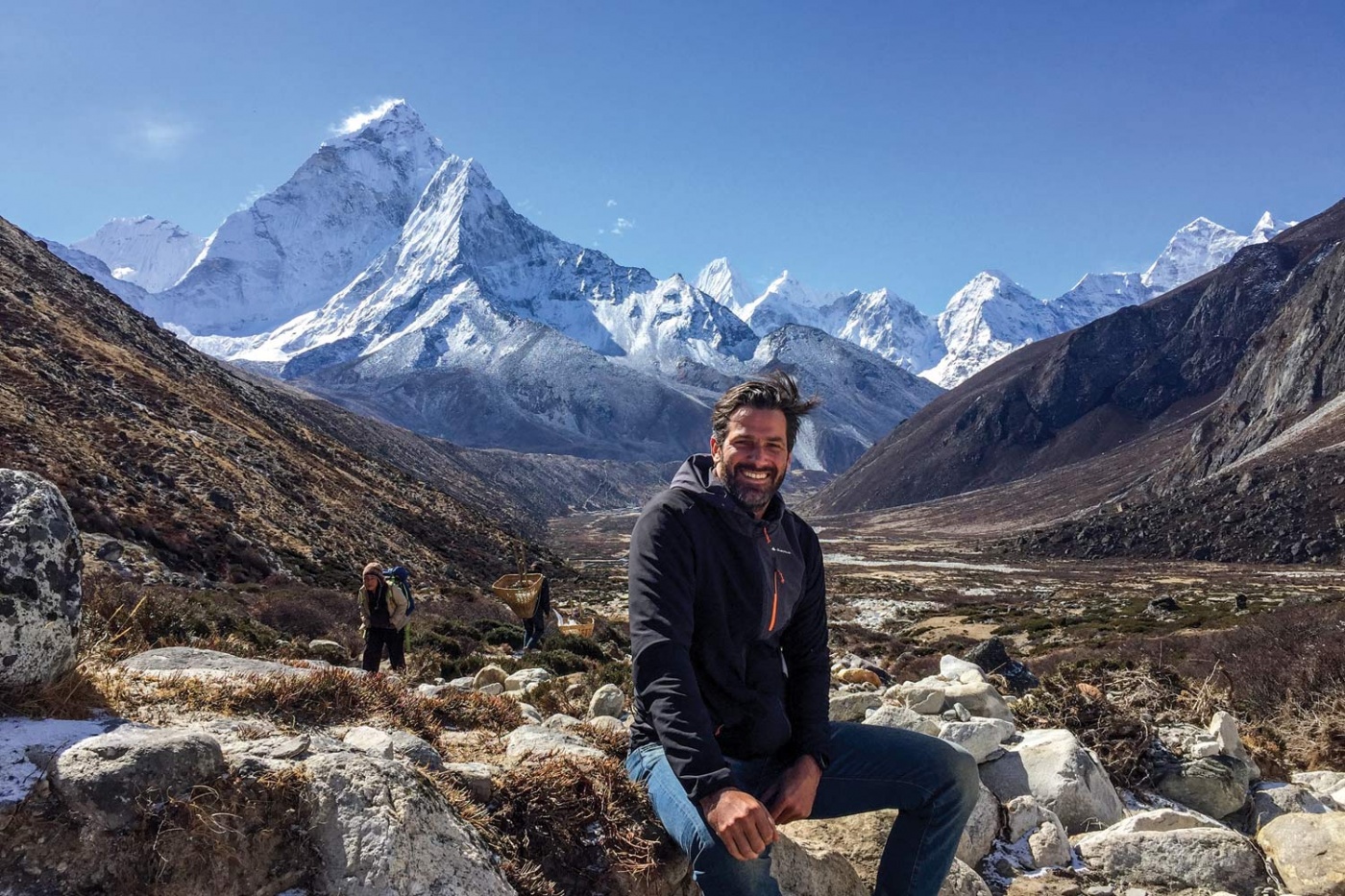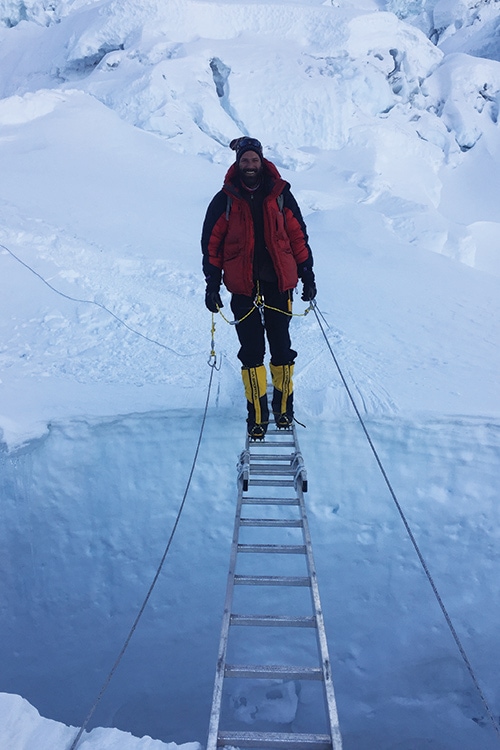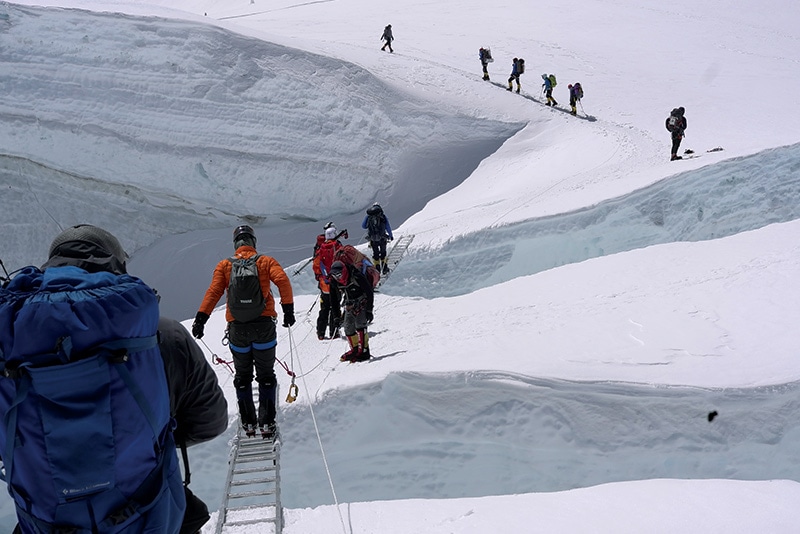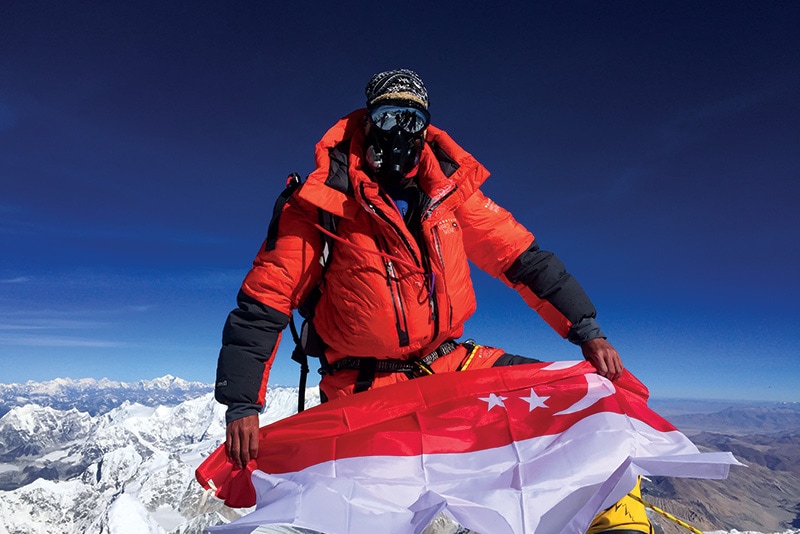Stories of Resilience: Paul Valin on Climbing Everest
Climbing Mount Everest is a deadly endeavour. Situated in the Himalayas at an elevation of 8,848m, it is the tallest mountain on the planet. A picturesque sight from afar, these steep slopes have also claimed many lives. Still, it remains the ultimate “bucket list” experience—one that Paul Valin was intent on completing. The most common misconception about such an undertaking is that physical strength is the most important factor in conquering icy inclines and oxygen-scarce environments. To the French finance expert and founder of Samara Consulting, however, it’s more so an exercise in mental resilience.
Here, he shares candidly on dealing with the multitude of obstacles in sub-zero temperature, looking death in the face, and the power of never giving up.
I: Before the Climb
A Childhood Dream
“I first read Maurice Herzog’s Annapurna when I was a kid. Herzog was famous for being the first French mountaineer to conquer a peak of more than 8,000m in 1950. The book has since sold over 11 million copies, and still remains one of the most captivating tales of adventure of all time. Reading this book sparked my childhood dream of climbing Mount Everest.”
Self-Doubt and Other Challenges
“Even though I had grown up doing a lot of mountaineering, I never thought I’d be able to scale Mount Everest. It was 2013 in Singapore when things started to change. I met Valerie, a friend of mine who made the climb in 2012 and she said, ‘It’s your childhood dream. Just do it!’ And she was right! She became my mentor, and I could never have done it without her.”
“However, there were still a few challenges I had to overcome. Money was one of them—the cost of climbing Everest averages at around $40,000. Time was another aspect. I had to set aside six to seven weeks for the expedition. It was also hard to accommodate my work commitments. Not to mention, there was the challenge of convincing my family that making this trip was a good idea. After all, Mount Everest can be quite a deadly destination.”
“When I decided to embark on this journey, most of the people around me were really reluctant to lend their support. One of the reasons was due to my lack of experience in dealing with high altitudes. Up till 2013, the tallest mountain I had climbed was below 4,000m. My weight was also an issue. I was a large rugby player who weighed 105kg, and I definitely didn’t have the proper physique for handling such high altitudes. On top of that, I suffer from asthma. This can be seen as a huge challenge, considering the fact that above 8,000m, you’ll only be able to take in about 30% of the oxygen that you’d normally take in at sea level. Nonetheless, I was sure I could overcome these challenges. ‘Never take no for an answer,’ is what I like to say.”
A False Start
“Valerie introduced me to her chief-of-expedition, Henry, an Everest veteran. Despite my weaknesses, he believed in my capacity to withstand the rigours of the climb. So we decided to test my capacity with a short expedition in Nepal at the end of 2013. Thankfully, it was a success, and he finally agreed to take me with his team to Everest.”
“I was 33 years old when I made my first attempt up the planet’s highest mountain in April 2014. Just to make it to the bottom of the mountain took a great deal of energy. It’s where you’re physically tested. This period is hard as you see many people giving up prematurely because of altitude sickness and other physical issues. Henry used to say, ‘To make it to base camp, it’s already half the job done.’ It was also less about the difficulty of reaching base camp, and more about the overall preparations you’ll need to make to get there.”
“Then, tragedy struck. A serac (a large block of glacial ice) fell on a group of Sherpas between base camp and camp one, killing 13 of them. This happened while we were acclimatising ourselves at base camp. Back then, it was the biggest tragedy Mount Everest had ever seen. No one climbed that year. The Nepalese government decided to close the mountain for the rest of the year.”
II: During the Climb
The Second Attempt
“Despite this minor setback, I was sure when I left base camp in 2014 that I will be back again. It was just a matter of time. Finally, at the end of 2017, I received a call from Henry. He told me that 2018 would be his final year of climbing before his retirement. I knew that it was now or never. So four years after my first attempt, I went back with the same team.”
Facing Death
“There’s never an easy moment when you’re scaling such treacherous slopes. I saw many dead bodies, and unfortunately, lost a friend in the journey between camp three and camp four. The devastation was tough to manage, to say the least. Even so, because I was prepared to face death, I remained obstinately focused.”
“The hardest part of the climb was the final leg between camp four (at 8,000m) and the summit (at 8,848m). Allow me to paint you a picture. It’d been 15 hours since I left camp three, and I’d not gotten a wink of sleep. At 8pm, it was time for a night climb from camp four. For seven straight hours, I climbed until I reached a point they call a ‘balcony’. It was 3am, and I was utterly exhausted. As I sat down to take a break while waiting for my Sherpa to pass me a fresh oxygen bottle, my body temperature dipped a few degrees.”
“Then, things started to get really problematic. My body was freezing, and I could no longer feel my fingers. My Sherpa urged me to keep climbing, but because I couldn’t move my fingers, he had to fix my rope. The expedition was becoming extremely unsafe. The next two hours were the toughest moments of my life. I had been climbing for 24 hours, it was dark, and we were at the edge of the mountain. I honestly thought that I would lose my fingers and more that day.
Newfound Strength
“At that moment, I told myself that I had reached the point of no return. I had no choice but to go ahead. I couldn’t back down now. My views on abnegation changed that day. I found reserves of strength, hidden somewhere deep within me. Gradually, as I pushed through the pain, the warmers in my gloves started to warm up and I could slowly feel my hands again. The sunrise at 5am came as a relief. I was at the peak of my emotions. In a way, I had conquered my own summit. Even though we were still 200m away from the actual peak of Mount Everest, I felt as though I had already made it.”
Reaching the Top
“It was 7:10am on May 21. I was at the top of the world—an amazing feeling like no other! Only 5,000 people have seen what I saw. I’d finally accomplished my childhood dream. Aside from the difficulty, the fact that it took us five weeks to reach the top amplified my ecstasy exponentially. The first thing I did was to hug my Sherpa, without whom I would never have made it to the top. I was also very lucky to have experienced perfect weather conditions, and still have some oxygen left in my bottle. I stood at the peak and took in the breath-taking view for a good 40 minutes, enjoying every second of it.”
“Of course, the journey isn’t over yet. Despite the adrenaline I felt in my body upon reaching the top, I realised very quickly that we were only 50% of the way to completing the trip. We still had to make the descent. Every mountaineer knows that most of the accidents happen on the way down, especially because of the sheer exhaustion. It’s crucial to watch every step you take. I took about 12 hours to go down. At 8 pm, I reached camp two, and finally got to base camp safely after a total of 36 hours.”
III: After the Climb
On Luck
“Climbing Everest is 50% luck, 30% mental strength, 10% physical strength, and 10% technical skills. You need a huge amount of luck to make it safely to the top, avoiding ice falls, avalanches, crevasses, food poisoning, altitude sickness, bad weather and harsh winds. A small portion of such bad luck can be minimised if you’ve got a good expedition team and competent Sherpas who are equipped to guide you safely. Without a skilled team, you won’t stand a chance to survive.”
On Patience
“You also have to be extremely patient. A lot of the time is spent waiting, sometimes for days and weeks, for the right weather window to climb. Also, when you’re at the higher camps (there are four camps in total above base camp, which is located at 5,400m), you can hardly walk. As a result, you spend hours in your tent trying to relax by reading or playing cards with your team. Furthermore, you go extremely slowly when you’re climbing. At a normal altitude, an average climber would scale 600m an hour. At Mount Everest, we climb 100m an hour. It’s really discouraging, and you have to constantly think, ‘step by step’.”
Mind Over Matter
“To survive Everest, you have to stay calm and relaxed. Don’t stress yourself out. You lose a lot of muscle mass and get weaker during those weeks above base camp. On average, you burn 10,000 calories a day mostly by fighting the lack of oxygen and the temperature fluctuations. I lost 13kg in my expedition. This affects you mentally as you’re supposed to be at 100% capacity for the final push, but you feel weak and out of power, which of course isn’t true. Your body is simply getting acclimatised and ready for the day you reach the summit. My stress levels were obviously challenged, especially being constantly surrounded by void, whether it’s crossing ladders with 50m of void below you, climbing at a 45-degree angle, or being at the ridge of the mountain with a 3km drop just a metre away from you.”
“In my view, physical strength is minor. There’s a reason why people aged above 50 and 60 are often the most successful climbers. Don’t get me wrong. You need to be fit when you arrive at base camp, but I’d say it’s not a key driver for success. I’d say it’s 100% mental. The level of exhaustion you face, when you’re climbing for hours without a single moment to sit down and rest, is just insane. When you’re in the ‘death zone’ at above 7,500m, you basically have no choice but to carry on in spite of your tiredness. At one point, I had to go 36 hours without sleep. During those hours, your mental strength is strongly challenged, but you’ll surprise yourself in your ability to push beyond your limits.”
A Changed Man
“Conquering Mount Everest changed my life. It’s been more than six months since I completed the journey, but I’ve yet to digest it all. I went through every emotion possible, from hell to paradise in just a few hours. It’s hard to put into words what I felt during the entire process. I learnt a lot about my limits, which has given me a great deal of confidence in how I approach life today.”
“As an entrepreneur, I’ve always been drawn to taking risks. It’s what defines an entrepreneur, I believe. Through this experience, however, I’ve learnt that it’s also important to be well advised and surround yourself with people you trust. This success story was no doubt a team effort. Lastly, always challenge yourself and chase new dreams. That’s my motto in life.”





